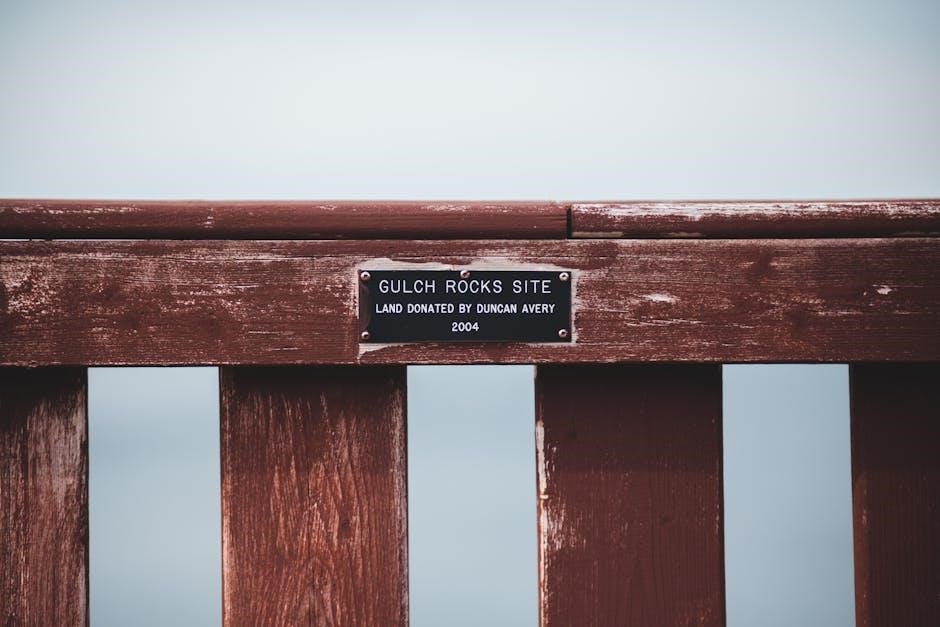salvation army donation items value guide
Navigating the donation process with The Salvation Army involves understanding how to value your contributions for tax purposes. While the organization offers guidance, the ultimate responsibility of assigning a fair market value rests with the donor. This guide offers insights into that process.
The Salvation Army, a globally recognized charitable organization, relies heavily on donations to fund its various programs and initiatives. These programs address a wide range of social issues, including homelessness, poverty, disaster relief, and rehabilitation services. Donations of clothing, furniture, household goods, and vehicles play a crucial role in supporting these efforts, providing essential resources for those in need.
Donating to The Salvation Army not only benefits the community but also offers potential tax advantages for the donor. By donating gently used items, individuals can declutter their homes while simultaneously contributing to a worthy cause. The organization’s thrift stores serve as a vital source of affordable goods for low-income families and individuals.
Understanding the donation process and the potential tax benefits can encourage more people to contribute to The Salvation Army’s mission. This guide aims to provide a comprehensive overview of the donation valuation process, helping donors accurately assess the value of their contributions and maximize their tax deductions, while supporting those in need.
Understanding the Donation Valuation Guide
The Donation Valuation Guide serves as a helpful tool for donors seeking to determine the fair market value of items they contribute to The Salvation Army. This guide typically provides a range of values for common donation items, such as clothing, furniture, and household goods, based on their condition and quality. It is crucial to understand that The Salvation Army itself does not assign a specific value to your donation; rather, it is the donor’s responsibility to assess the value.
The guide offers a starting point for this assessment, presenting both low and high estimates for various items. Donors should carefully consider the age, condition, brand, and overall quality of their items when selecting a value within this range. Items in excellent condition, newer, or from well-known brands may warrant a higher valuation, while older, worn, or damaged items should be valued accordingly.
Remember, the values provided are merely guidelines. It is essential to exercise reasonable judgment and consult with a tax advisor if you have any questions or concerns about valuing your donations accurately. The goal is to arrive at a fair and justifiable valuation that reflects the true worth of the donated items.
Why a Value Guide is Important
A donation value guide is crucial for both donors and The Salvation Army for several important reasons. Firstly, it provides donors with a tangible resource to help them determine the fair market value of their donated items. Without such a guide, donors might struggle to accurately assess the worth of their contributions, potentially leading to over or under-valuation, which can have tax implications.
Secondly, the value guide promotes transparency and consistency in the donation process. By offering a standardized framework for valuation, it helps ensure that donations are assessed fairly and equitably across the board. This can foster trust and confidence among donors, encouraging them to continue supporting The Salvation Army’s mission.
Thirdly, an accurate valuation is essential for tax deduction purposes. The IRS requires donors to substantiate their charitable contributions with reliable records, and a value guide can serve as supporting documentation. By using the guide as a reference, donors can more easily justify the value they claim on their tax returns, reducing the risk of audits or penalties.
Finally, the value guide helps The Salvation Army manage its resources effectively. By providing donors with a clear understanding of the value of their donations, it enables the organization to better plan its budget.
Items Commonly Donated and Their Estimated Values
The Salvation Army gratefully accepts a wide array of donations, each contributing to their charitable endeavors. Understanding the typical items donated and their estimated values is crucial for donors seeking tax deductions. Clothing, a staple donation, ranges in value based on condition and brand. Gently used men’s suits may fetch a higher valuation than well-worn t-shirts, while women’s dresses and children’s apparel also contribute significantly.
Furniture represents another substantial category. Sofas, tables, chairs, and bedroom sets find new life through The Salvation Army. Appraisals depend heavily on the item’s age, condition, and style. Modern pieces in excellent condition generally command higher values than older, damaged items. Appliances, both large and small, are also welcomed. Working refrigerators, stoves, washers, and dryers can be valuable donations, while smaller appliances like toasters and blenders also add up.
Beyond these staples, household goods such as kitchenware, décor, and electronics are commonly donated. Books, toys, and sporting equipment also find their way to The Salvation Army, providing value and support to those in need. It is important to consult valuation guides for a better understanding.
Clothing (Men’s, Women’s, and Children’s)
Clothing donations form a significant portion of the items received by The Salvation Army, offering affordable options to individuals and families in need. The value assigned to these donations varies widely based on several factors, including the garment’s condition, brand, style, and age. For men’s clothing, items like suits, dress shirts, and quality outerwear generally hold a higher value compared to casual wear.
Women’s clothing donations encompass a broad spectrum, from professional attire to everyday wear. Dresses, blouses, skirts, and jackets in good condition contribute valuable resources. Children’s clothing, due to its shorter lifespan, may have a lower individual value, but the cumulative impact of donating multiple items can still be substantial. When assessing the value of clothing donations, it’s important to consider the fair market value, which represents the price a willing buyer would pay for the item in its current condition.
Remember, items must be in good, used condition or better to qualify for a tax deduction, according to IRS regulations. Donating clean, gently worn clothing maximizes its value.
Furniture
Donating furniture to The Salvation Army provides essential resources for families and individuals seeking to furnish their homes affordably. The valuation of furniture donations depends heavily on factors such as the item’s condition, age, brand, material, and overall market demand. High-quality pieces made of solid wood or featuring unique designs generally command higher values compared to mass-produced or damaged items.
Sofas, loveseats, and armchairs in good condition are highly sought after, as are dining tables, chairs, and bedroom sets. Antique or vintage furniture can potentially hold significant value, especially if well-preserved and authenticated. When determining the value of your furniture donation, consider factors like wear and tear, stains, scratches, and any necessary repairs. It’s crucial to assess the fair market value, which represents the price a willing buyer would pay for the item in its current state.
Remember, The Salvation Army typically accepts furniture in good, usable condition. Ensuring your donation is clean and free from significant damage maximizes its potential value. Consulting a furniture appraiser for antique pieces is advisable.
Appliances
Donating appliances to The Salvation Army can significantly benefit individuals and families in need while also offering you a potential tax deduction. However, accurately valuing donated appliances is essential for tax purposes. Several factors influence an appliance’s value, including its age, condition, functionality, energy efficiency, and brand reputation. Newer, energy-efficient models in excellent working order generally hold higher values.

Consider the original purchase price and compare it to current market prices for similar used appliances. Check online marketplaces and local listings to gauge fair market value. Major appliances like refrigerators, ovens, washing machines, and dryers typically have higher values than smaller appliances such as microwaves or toasters.
It’s crucial to ensure that the appliance is in good working condition before donating. The Salvation Army typically assumes appliances are functional unless otherwise noted. Note any defects or necessary repairs, as this will affect the valuation. Remember to consult The Salvation Army’s donation guidelines and your tax advisor for specific requirements and limitations related to appliance donations.
Factors Affecting Donation Value
Determining the value of donated items to The Salvation Army requires considering several key factors. The primary influence is the item’s condition; items in excellent or good used condition will command a higher value than those that are damaged, stained, or in need of repair. Age is another significant factor, as newer items generally hold more value than older, outdated ones.
Original purchase price, while not the sole determinant, provides a baseline for valuation. Current market prices for similar used items should also be researched to ascertain fair market value. Brand reputation can also play a role, with well-known and respected brands often retaining higher values;

For clothing, factors like style, fabric, and season influence value. Furniture value depends on its construction, materials, and design. For electronics, functionality and technological relevance are critical. Donors should carefully assess these factors and consult valuation guides to ensure accurate and justifiable donation values for tax deduction purposes. Remember, accurate assessment is key.

The Salvation Army’s Role in Valuation
The Salvation Army plays a supportive role in the donation valuation process, but it’s crucial to understand the limitations of their involvement. By law, The Salvation Army cannot assign a specific monetary value to your donated items. Their primary function is to provide donation centers where items can be dropped off and to issue receipts acknowledging the donation.
While they offer donation valuation guides as a helpful resource, these guides provide ranges and estimations based on averages. The responsibility of determining the actual fair market value rests solely with the donor. The Salvation Army’s valuation guides are intended to offer a general idea of potential values for commonly donated items in good condition.

Ultimately, donors must exercise due diligence, considering the condition, age, and market value of their items to arrive at a justifiable valuation for tax deduction purposes. Accurate record-keeping and understanding IRS guidelines are essential for a smooth donation process.
Tax Deduction Information and Guidelines
Claiming a tax deduction for donations to The Salvation Army requires adherence to IRS guidelines. Generally, you can deduct the fair market value of donated items in good used condition. The item’s condition significantly impacts its value and deductibility; items in poor condition may not qualify. Accurate record-keeping is crucial. For each donation, maintain a detailed list describing the items, their condition, and the date of donation.
If you donate property worth more than $500, you’ll need to complete Form 8283 and attach it to your tax return. For items valued over $5,000, a qualified appraisal may be necessary. Remember, the IRS stipulates that you can only deduct the amount exceeding what you received in return for your donation. Always consult the IRS guidelines or a tax professional for personalized advice. Understanding these rules ensures you accurately claim eligible deductions while remaining compliant with tax regulations.
Consulting a Tax Advisor
While resources like donation valuation guides offer helpful estimates, navigating tax deductions can be complex. Consulting a qualified tax advisor provides personalized guidance tailored to your specific financial situation. A tax professional can help you accurately determine the fair market value of donated items, ensuring you maximize your deductions while remaining compliant with IRS regulations.
They can also advise on record-keeping requirements, including necessary documentation for donations of varying values. Furthermore, a tax advisor can assess the potential impact of charitable contributions on your overall tax liability and identify any potential red flags. Seeking professional advice is particularly beneficial for high-value donations or complex tax situations. By engaging a tax advisor, you gain peace of mind knowing your donations are handled correctly and your tax returns are optimized. They can also navigate any changes in tax laws.
Resources and Further Information
To aid in your donation endeavors, several resources are available for further consultation. The Salvation Army’s website provides general information about donation guidelines and accepted items. The IRS website offers detailed publications on charitable contributions, including Publication 526, which outlines deduction rules and record-keeping requirements. Online search engines can connect you with local Salvation Army donation centers and tax professionals in your area.
Additionally, consider exploring online forums and communities dedicated to charitable giving for shared experiences and insights from other donors. Remember to consult with a qualified tax advisor for personalized guidance on maximizing your donation’s tax benefits. Keep thorough records of your donations, including receipts and valuation documentation. By utilizing these resources, you can make informed decisions about your donations and ensure compliance with tax regulations. Staying informed empowers you to contribute effectively and responsibly.